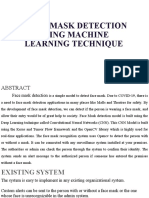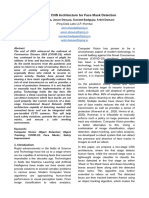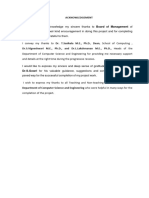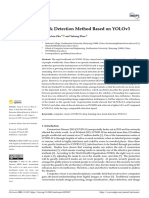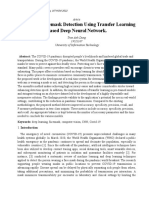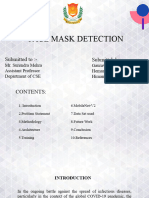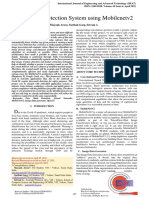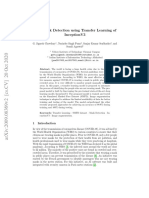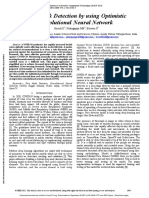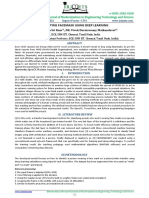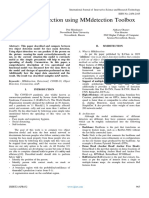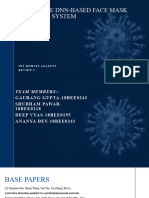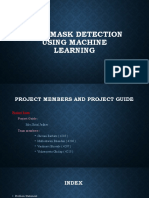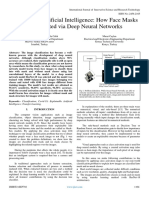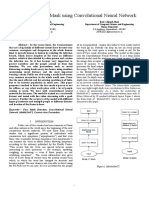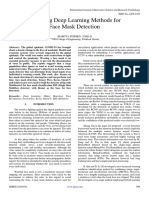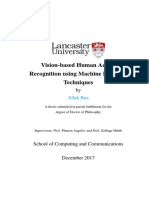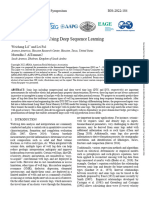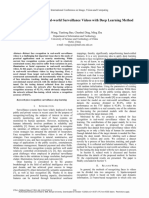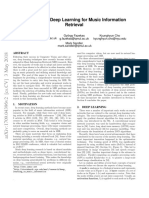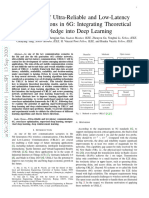0% found this document useful (0 votes)
56 views8 pagesIjatcse 33942020
This document discusses two approaches for real-time multi-scale facial mask detection and classification using deep transfer learning techniques. The approaches use YoloV3 and NASNetMobile/Resnet_SSD300 algorithms on facial mask datasets to detect masks. Evaluation shows the YoloV3 model achieves 34% mAP and 91.7% recall, while the NASNetMobile model achieves 98-99% accuracy and recall.
Uploaded by
giovana.rodriguez.6104Copyright
© © All Rights Reserved
We take content rights seriously. If you suspect this is your content, claim it here.
Available Formats
Download as PDF, TXT or read online on Scribd
0% found this document useful (0 votes)
56 views8 pagesIjatcse 33942020
This document discusses two approaches for real-time multi-scale facial mask detection and classification using deep transfer learning techniques. The approaches use YoloV3 and NASNetMobile/Resnet_SSD300 algorithms on facial mask datasets to detect masks. Evaluation shows the YoloV3 model achieves 34% mAP and 91.7% recall, while the NASNetMobile model achieves 98-99% accuracy and recall.
Uploaded by
giovana.rodriguez.6104Copyright
© © All Rights Reserved
We take content rights seriously. If you suspect this is your content, claim it here.
Available Formats
Download as PDF, TXT or read online on Scribd
/ 8

